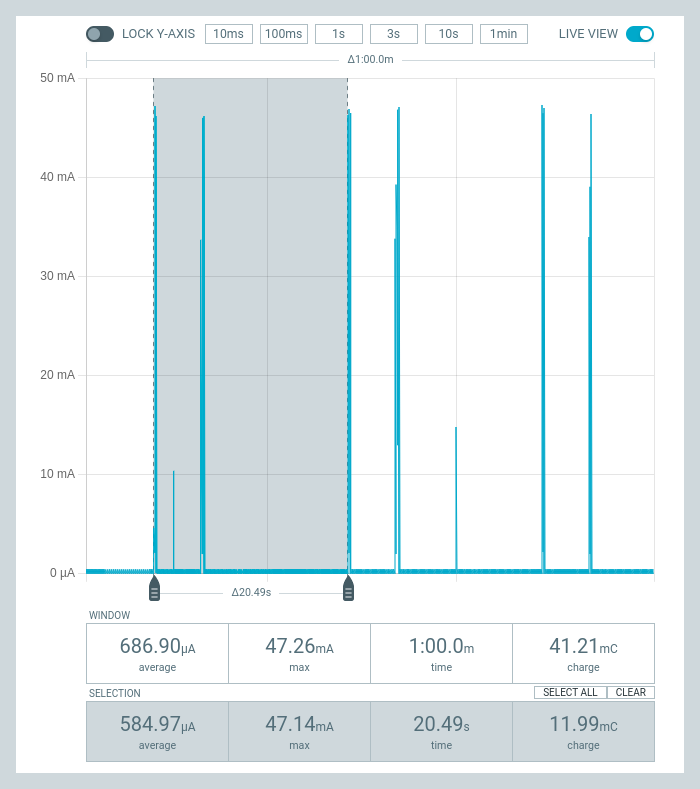Using modem firmware versions 1.3.5 and 1.3.2 we see exceptionally high average current consumption when measuring eDRX cycles on Jio's nb-iot network in India (Band 5). We are using the PPK2 and the 9160DK version 1_1_0. We've tried using the PPK as an ammeter and a source meter with the same results.
The network confirms our eDRX interval of 20.48s and PTW of 2.56s
We believe our power measurement setup is good because our floor current between eDRX cycles is ~40uA. This is consistent with documentation and our SIM still being on.
According to the power calculator, we should see ~168uA average current. Instead we see ~584uA, see plot below. We've also included a closeup of the eDRX profile.
Supply Voltage is 3.7V. We've taken many other measurements and our setup is always ~400uA higher average current for DRX and eDRX cycling. We really need an explanation quick or our high volume product is dead in the water.


One possible explanation is iDRX PDCCH repetitions. I've left those at the default setting of 16 on the calculator. When we query the radio using AT+CEINFO? the reptition count is set to 1 but we have no idea if that command works as expected.
Thank you!




